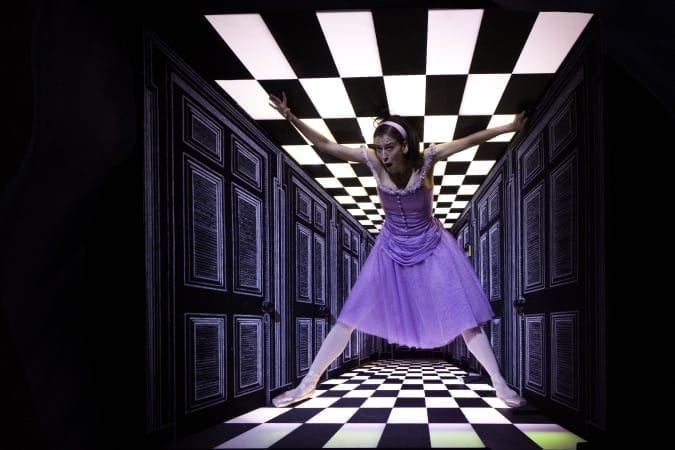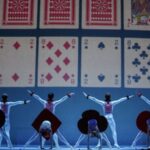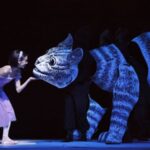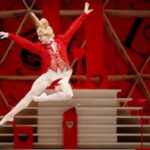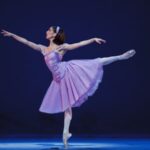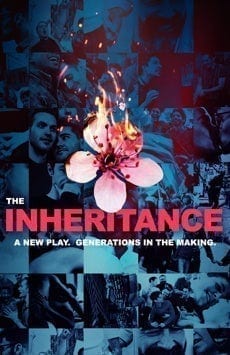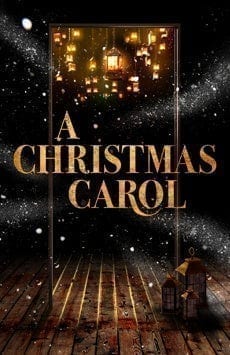The National Ballet of Canada
at the David H. Koch Theater at Lincoln Center
September 9 thru September 14
Choreography by Christopher Wheeldon
Music by Joby Talbot
The Reverend Charles Lutwidge Dodgson’s fantastical story for children, Alice’s Adventures in Wonderland, didn’t get good reviews when it was initially published in 1866. It wasn’t until the publication of its sequel, Through the Looking-Glass, and What Alice Found There, in 1871 that Dodgson, who wrote under the pseudonym Lewis Carroll, found his immortality. Today, both books are rightly considered masterpieces of the literary nonsense genre, enjoyed by children and adults alike. But that still doesn’t mean Alice’s adventures are a natural fit for a balletic adaptation. On the contrary, it’s an extremely complicated narrative that meanders and wanders, often without rhyme or reason. But, of course, that’s the way Carroll purposefully wanted it. Which makes Christopher Wheeldon’s (choreography) and Joby Talbot’s (music) ballet of …Wonderland an even more amazing accomplishment for what it achieves. Truly theatrical in form, content and style, their …Wonderland is visual feast and hugely entertaining.
A co-production of The National Ballet of Canada and The Royal Ballet, the New York premiere of an exciting new ballet, Alice’s Adventures in Wonderland, is being produced by the Joyce Theater Foundation for a short-run (Sep 9-14) at Lincoln Center following it’s world premiere at The Royal Ballet at London’s Royal Opera House, and it’s North American premiere by the National Ballet in Toronto – both of which occurred in 2011. And who could blame them for wanting to set such deliciously outrageous characters dancing: Alice, the White Rabbit, the Queen of Hearts, the Mad Hatter and the Cheshire Cat have entranced generations of readers so why not have them put on point shoes and pique-turn their way into our hearts.
There will be purists who quibble about the tacked on prologue set in 1862 at Christ Church where Dean Henry Liddell is hosting a garden party where Lewis Carroll himself (as a lecturer and, as it turns out, photographer) entertains Liddell’s daughters, Lorina, Alice an Edith, by reading them a story and performing magic tricks. Everyone present morphs into characters in Alice’s ensuing story, e.g., Carroll becomes the White Rabbit, a handsome gardner, Jack, that Alice fancies but is dismissed becomes the Knave of Hearts and Alice’s mother become the Queen of Hearts, and so on. Those same purists will quibble at the end of the ballet when Wheeldon and Talbot bring their conceit full circle with an epilogue wherein Alice and Jack – in present day – return to the Deanery where the story and the magic are passed back to Carroll, now dressed as a student tourist. But this narrative bookending, as it were, succeeds in making the piece a true piece of theatre. Is it a dream? Are they time traveling? Are they doing hallucinogens? Who cares – there’s plenty to enjoy without worrying about those details. Chief among …Wonderland’s pleasures are its beautiful melodic score, its wonderful dancing, and its eye-popping production values courtesy of Bob Crowley (sets and costumes) and Natasha Katz (lighting).
- Artists of The National Ballet of Canada (Photo: Holly Meighen – HHMedia)
- Sonia Rodriguez as Alice with the Cheshire Cat (Photo: Bruce Zinger)
- Artists of The National Ballet of Canada (Photo: Holly Meighen – HHMedia)
Joby Talbot, who made his Royal Ballet debut in 2006 with a piece called Chroma for Wayne McGregor, has since written two full-length ballet for them in association with Christopher Wheeldon: Alice’s Adventures in Wonderland (2011) and The Winter’s Tale (2014) – both in co-production with The National Ballet of Canada. Talbot has written extensively for film and television and that influence shows greatly in his music for …Wonderland. To be sure, that’s not meant as a criticism or a dig at Talbot. His music is richly melodic and expertly crafted to the various scenes and characters Wheeldon is choreographing for; the latter an incredibly difficult art in itself. Some might posit that Talbot’s writing is too ‘crafted’ and lacks spontaneity – either for himself or for Wheeldon – but I would disagree. When constructing something as complicated as a ballet with source material this challenging, there must be some degree of fixed logic in the score’s construction or the whole enterprise would never get off the ground. Talbot’s music is cinematic, to be sure, but always in a way that feels and sounds inspired by ‘dance’ itself. Clearly influenced by the monumental film scores of Franz Waxman, Miklos Rosza, John Barry, and John Williams, as well as modern contemporary choral composers like Morten Lauridsen, Eric Whitacre and even Philip Glass, Talbot is as much an artist as a technician. The soaring pas de deux danced by Alice and Jack at the beginning and the end of the ballet has gorgeous lines of melody, orchestrated by shimmering chords in the strings and repeated intonations of the same note by the brass. Musically, there are many thrilling moments in Talbot’s score – some simple and unadorned and some that bring to mind the dazzling work of Erich Korngold. It’s clear to see why everyone wants to work with him for he is truly gifted.
- Dylan Tedaldi as The White Rabbit (Photo: Holly Meighen – HHMedia)
- Sonia Rodriguez as Alice (Photo: Bruce Zinger)
- Elena Lobsanova as Alice and Xiao Nan Yu as The Queen of Hearts (Photo: Holly Meighen – HHMedia)
Wheeldon’s choreography for …Wonderland is a wide-ranging feat of creativity. There are long, fluid passages for Alice to express her fear, wonderment and amazement, and there a plethora of moments where Wheeldon’s whimsy and sense of humor take over with abandon, notably when he’s creating steps for the many crazy characters Alice meets on her journey. At the performance I attended, Robert Stephen was a delight in the roles of Lewis Carroll and the White Rabbit. Jack Bertinshaw dusted off his tap shoes and impressed mightily in the role of the Mad Hatter. As the Fish Footman, every time Dylan Tedaldi sailed into the air the audience gasped. The amplitude in his leaps made us yearn for more from his Fish. But the audience favorites were three: Harrison James literally floating on air as Rajah and The Caterpillar, Svetlana Lunkina as the shamelessly funny Queen of Hearts, and the brilliant realization of the Cheshire Cat – a coup de theatre that won’t be spoiled here. In the lead roles of Alice and Jack/Knave of Hearts, Sonia Rodriguez and Naoya Ebe both danced beautifully. Ebe partnered Rodriguez with deftness and a solid presence, allowing her to shine as she executed Wheeldon’s romance-infused footwork.

